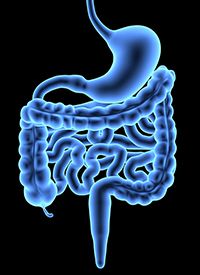Meta-Analysis Finds Bevacizumab Plus Erlotinib Combination Effective in Advanced HCC
A new meta-analysis has found that the combined regimen of bevacizumab (Avastin) plus erlotinib (Tarceva) is effective in treating advanced or metastatic hepatocellular carcinoma.

A new meta-analysis has found that the combined regimen of bevacizumab (Avastin) plus erlotinib (Tarceva) is effective in treating advanced or metastatic hepatocellular carcinoma (HCC).
The authors, led by Liyun He, MD, of Nanchang University, Nanchang, China, analyzed 8 phase II clinical trials that included a total of 342 HCC patients. They found that the pooled objective response rate (ORR) was 12.6% (95% confidence interval [CI], 6.319.0%;P = 0.005). The pooled disease control rate (DCR) was 54.5% (95% CI, 48.966.8%). The 16-week progression-free survival (PFS) rate was 50.2% (95% CI 38.2–62.2%).
They also analyzed 2 key OS rates: the 6-month OS rate was 77.8% (95% CI, 71.384.2%) and the 12-month OS rate was 44.9% (95% CI, 36.8–53.0%). Additional co-primary endpoints were any-grade adverse effects (AEs), and grade 3–4 AEs.
In a report recently published inBMC Cancer, He et al posited that the combined regimen has a place in the contemporary treatment paradigm. “With moderate efficacy, bevacizumab plus erlotinib could be a promising second-line treatment regimen for HCC patients with advanced disease or metastases when sorafenib fails,” they wrote. “This treatment regimen is meaningful and bears substantial value in clinical practice, especially in patients refractory to sorafenib.”
Of the 8 trials analyzed, 7 were single-arm trials. One was a randomized controlled trial. Most of the trials used the same dosing strategy: 10 mg/kg bevacizumab every 14 days plus 150 mg of erlotinib by mouth daily.
The 342 patients came from the United States, Egypt, China, Hong Kong, and Taiwan. Most patients were Caucasian, African American, Asian, or Hispanic. The patients were Child-Pugh class A or class B. Their ECOG performance status was 0-1 or 0-2, and most were at Barcelona Clinic Liver Cancer (BCLC) stage C. The authors noted that a few patients had background liver disease, which might have decreased the effectiveness of the combined regimen.
The DCR ranged from 50% to 80% in 5 trials with a total of 221 participants. The pooled DCR from all available studies was 60.3% (95% CI, 47.373.3%) as determined by the random-effects model (heterogeneity analysis:I2= 76.4%; P = 0.002). The authors omitted one study with large heterogeneity based on the results of sensitivity analysis for a pooled ORR was 54.5% (95% CI, 48.966.8%) with extremely low heterogeneity (I2= 0; P = 0.668).
Five studies reported the PFS at 16 weeks. The pooled PFS was 46.9% (95% CI, 35.158.8%) with high heterogeneity (I2= 72.9%; P = 0.002). The pooled PFS at 16 weeks was 50.2% (95% CI, 38.262.2%) with high heterogeneity (I2= 70.6%; P = 0.0009). He et al reported that arbitrarily omitting any one study did not decrease the heterogeneity.
The OS rate at 6 months ranged from 38.1% to 83.6%. These data were reported for a total of 208 patients from 6 trials. The overall OS rate at 6 months was 74.0% (95% CI, 64.883.2%) with high heterogeneity (I2= 56.8%; P = 0.041). After omitting one study, the modified overall OS at 6 months was 77.8% (95% CI, 71.384.2%) with low heterogeneity (I2= 19.5%; P = 0.290).
The OS rate at 12 months, based on 298 patients in 7 trials, ranged from 12.4% to 57.1%. The pooled OS at 12 months was 43.7% (95% CI, 32.954.6%) with high heterogeneity (I2= 72.6%; P = 0.001). After omitting 2 studies, the pooled OS at 12 months was 44.9% (95% CI, 36.853.0%) with a lower heterogeneity (I2= 37.9%; P = 0.169).
The most common any-grade AEs were diarrhea (54.4%), acne (51.1%), fatigue (46.5%), hemorrhage (36.8%), and anorexia (34.2%). Grade 3-4 toxicities included fatigue (11.9%), diarrhea (9.0%), hypertension (6.7%), acne (5.8%), and hemorrhage (5.3%).
He et al performed subgroup analyses for a variety of variables, including: ECOG performance status, pretreatment status, first-line vs. later treatment, and liver function. Due to data limitations, they could only examine ORR and OS at 12 months via subgroup analysis. When stratified, ECOG performance status and whether or not a patient had previously received treatment did not differ significantly in ORR or OS at 12 months.
However, they did detect significant differences in grade 3-4 AEs (P < 0.05). “The United States populations had a higher ORR than the non-United States populations (16.1% vs 7.1%;P = 0.014), while no significant differences in OS at 12 months and grade 3-4 AEs were noted,” they wrote. “A significant difference was noted between the Child-Pugh class A/B and Child-Pugh class A groups in OS at 12 months and grade 3-4 AEs, whereas no obvious difference was found in the ORR.”
Three of the included trials evaluated the combined regimen as a first-line treatment. He et al found that the second-line treatment yielded higher PFS at 16 weeks (54.5% vs. 35.3%;P = 0.012) and significantly increased OS at 12 months (44.3% vs. 40.8%;P = 0.048) compared to bevacizumab plus erlotinib as a first-line treatment. “In general, the second-line treatment demonstrated advantages over the first-line treatment to some extent,” they wrote. “Conclusively, considering its moderate benefit response, advantages over first-line treatment and the current clinical status of sorafenib, we tend to use the bevacizumab plus erlotinib regimen as a second-line treatment for patients with advanced HCC.”
Reference:
He L, Deng H, Lei J, et al. Efficacy of bevacizumab combined with erlotinib for advanced hepatocellular carcinoma: a single-arm meta-analysis based on prospective studies [published online March 28, 2019]. BMC Cancer. 19(1):276. doi: 10.1186/s12885-019-5487-6.
Gholam Contrasts Lenvatinib With Other Options in Child-Pugh B HCC
December 21st 2024During a Case-Based Roundtable® event, Pierre Gholam, MD, discussed how post hoc and real-world analyses build upon the limited available trial data for treating patients with unresectable hepatocellular carcinoma with Child-Pugh B status.
Read More